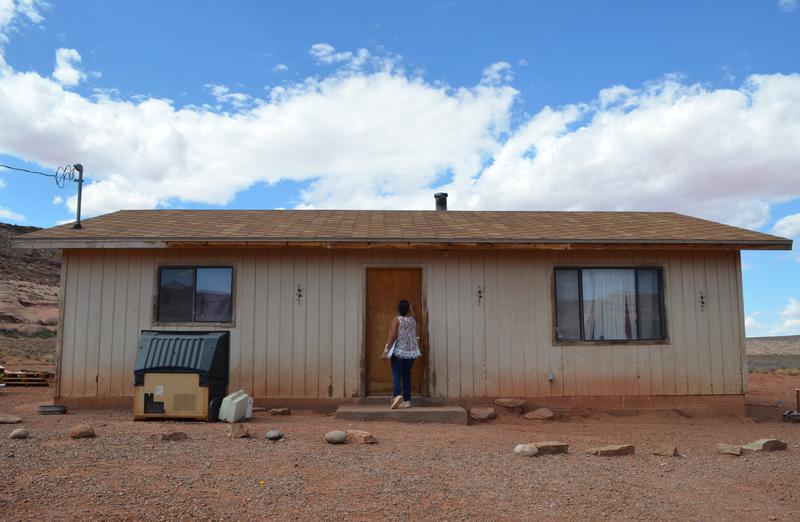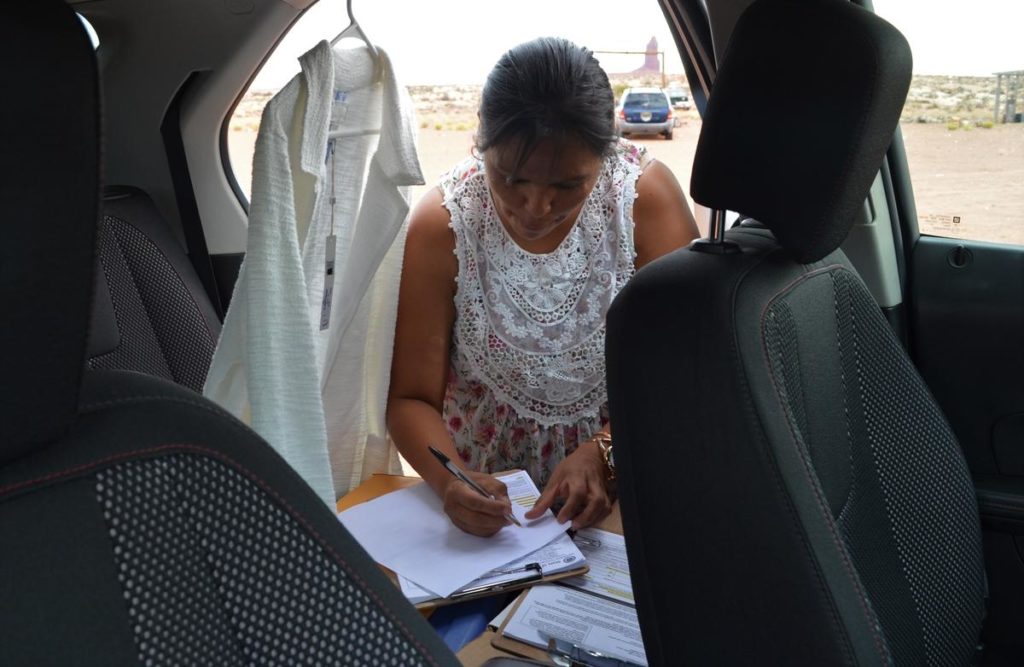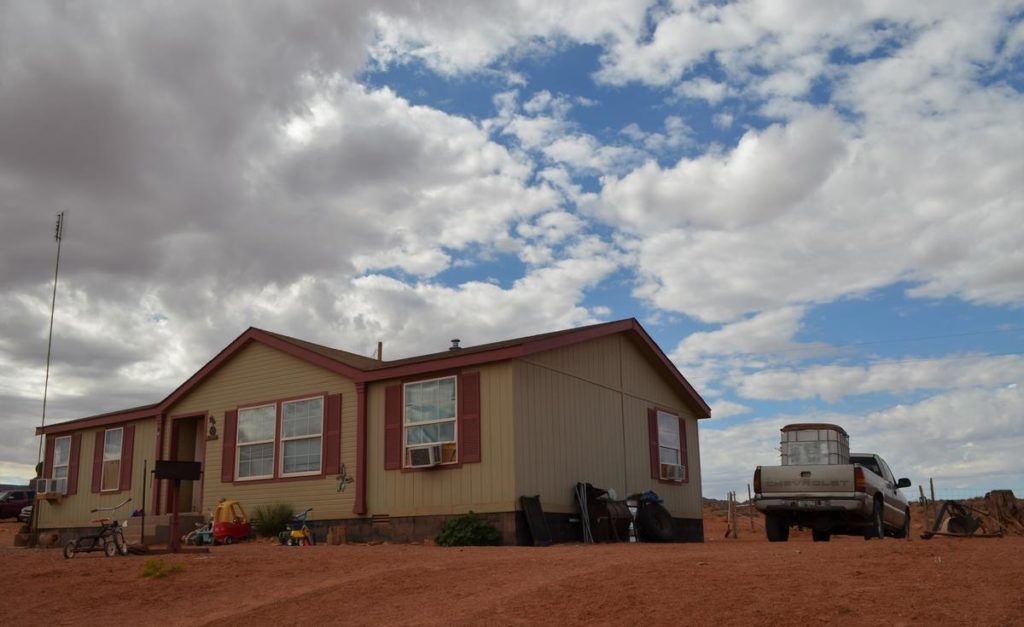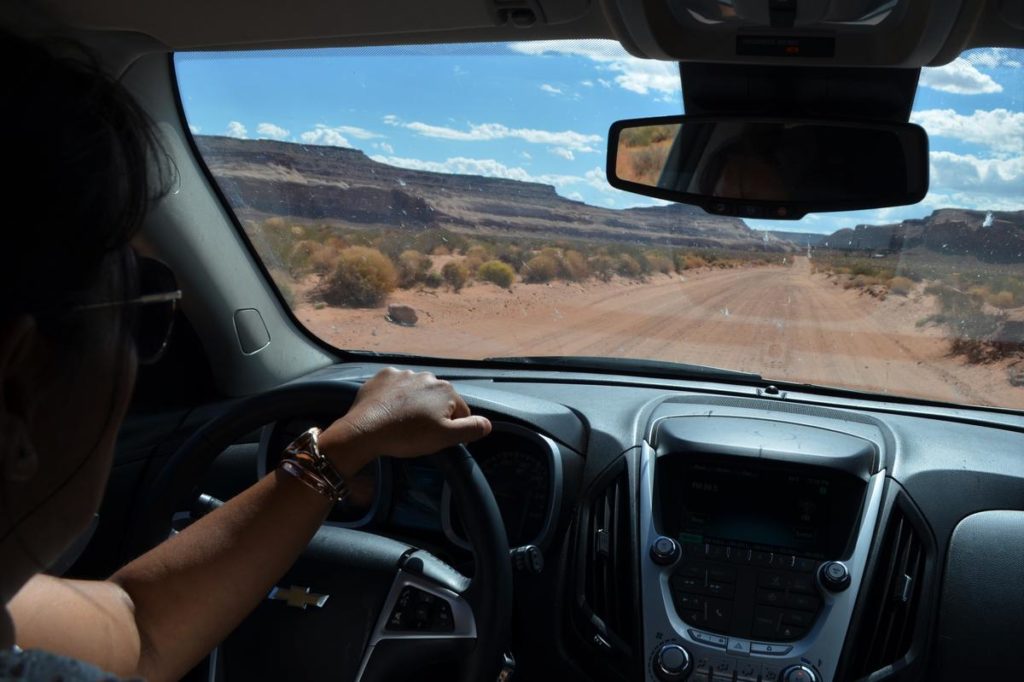Contested Southern Utah Election Draws Voter Registration Groups To Indian Country

Read the original article at KUER.
MONUMENT VALLEY, Utah — On a recent Monday morning, Tara Benally crept along the red clay of San Juan County Road 433 in her Chevy Equinox, in search of a rare find among the red rocks of this part of the Navajo Nation: prospective voters.
Traveling at just over 15 miles per hour on the washboard road, past towering red rock walls and sandstone spires here on Utah’s southern border, Benally aimed to meet with voters ahead of November’s midterm election. Her goal was to ensure they were registered and that they show up at the polls.
Born and raised in San Juan County, Benally, who is Navajo, pulled up to a mobile home seemingly in the middle of nowhere. A silver Ford pickup, its bed holding a large plastic cube with several hundred gallons of trucked-in water, stood next to the doublewide.

“I’m sure these people will be pretty surprised to see us here,” Benally, who works with the Rural Utah Project, a nonpartisan voter registration group, said as she walked to the front door.
Across the country Native groups and voter outreach advocates like the Rural Utah Project are venturing into Indian Country to get potential voters out for the midterms. It’s part of a coordinated push as a record number of Native American candidates are running for office this November.
San Juan County is a complicated place. The southern region overlaps with the Navajo Nation, while the northern part is controlled by the county. The population is roughly half and half Navajos and whites. Navajos tend to vote Democratic, while white voters are largely Republican. In a sparsely populated county that is larger than Connecticut and Rhode Island combined, every vote matters.
The stakes are high in this year’s election. In 2016 a federal judge ordered the voting district boundaries in San Juan County to be redrawn after ruling that they gave too much control to white, typically Republican voters. Based on the new maps two Navajo Democrats, Kenneth Maryboy and Willie Grayeyes, could win seats on the three-member County Commission. If both are elected, it would be the first time a majority of Native Americans sat on the Commission.
But irregularities persist even with the redrawn districts. With the new boundaries, some Navajo voters have been listed in the wrong precincts, Benally said. On election day, those voters would get the wrong ballot, which could skew the results. That’s why she was at Roger Hosteenez’s front door, asking to talk with him about voting.

Inside his mobile home, Benally alternated between speaking Navajo and English. She filled out a new voting form to verify his address and offered to call and remind him to vote before the November 6 election.
“Do you need a ride to the polling place?” Benally asked.
Hosteenez said the voting process itself is straightforward, but the cost of gas and driving bad roads has made it difficult to get to his post office box to vote by mail.
“Last time I tried, I guess they didn’t count my vote. When Trump was running,” Hosteenez said.
Infrequent trips into town and the long distance residents must travel creates an added variable for voting deadlines to be missed, Benally said.
“Some people will just pick up their mail and not realize that their ballot is in the mail until they get home, and then say ‘Oh, hey, my ballot’s here,’” she said.
Political science study area
San Juan County stands out for its stark split along political and racial lines between white Republicans and Democratic Navajos. But there are some similarities based on its remote, rural locations.
Only 25 percent of the residents in San Juan County have street addresses, which includes both Navajos and non-Navajos.
Based on that, there are bound to be some discrepancies with the new district map, said Jesse Trentadue, an attorney representing San Juan County.
“You have a great political science study area here,” he said.
What’s more, Trentadue said complaints about voters being put in the wrong precincts with the redrawn map have been blown out of proportion. Regardless, county clerks are quickly correcting any registration mistakes, he said.
“Because of the Rural Utah Project’s effort to register Navajo voters, they’re finding more of them [on the Navajo Nation],” Trentadue said, “But would the same problem exist elsewhere in other parts of the county? With respect to non-Navajo? Yes.”
The Utah Lt. Governor’s Office received complaints from both Navajo and non-Navajo residents after the 2018 primary, Justin Lee, state director of elections, said. Complaints included overcrowded, mismanaged polling locations and reports of voters being asked for whom they were voting.
For the first time, Lee’s office will send a poll watcher this year to San Juan County on election day to make sure things go smoothly.
The Colorado-based Native American Rights Fund represents many tribes in voting disputes around the country. James Tucker, an attorney who works with the fund, said Indian country largely feels left out of the voting process.
“In some places it’s just because of neglect. In other places it’s by design,” Tucker said before listing a range of barriers Native Americans face when trying to cast their ballots.
Those include a lack of registration opportunities, distance issues to get to registration sites, distance issues to get to their polling place, lack of access to mail-in voting, lack of early voting opportunities, overt discrimination at the polls, he said.

National examples of overt discrimination include voter ID laws applied uniquely to Native American voters and a South Dakota polling place located in a local sheriff’s office that, Tucker said, discouraged their participation.
Back in Monument Valley, Benally said she is skeptical about how election day will go, but she’s hoping the efforts her group is making will help. That means more outreach to people like Hostennez’s and supporting his ability to vote – whether that’s giving him information or giving him a ride to the polls on election day.
As they finished up, Hosteenez thanked Benally for her help. She got back in her car and drove on to the next house, slowly creeping along at 15 miles per hour.